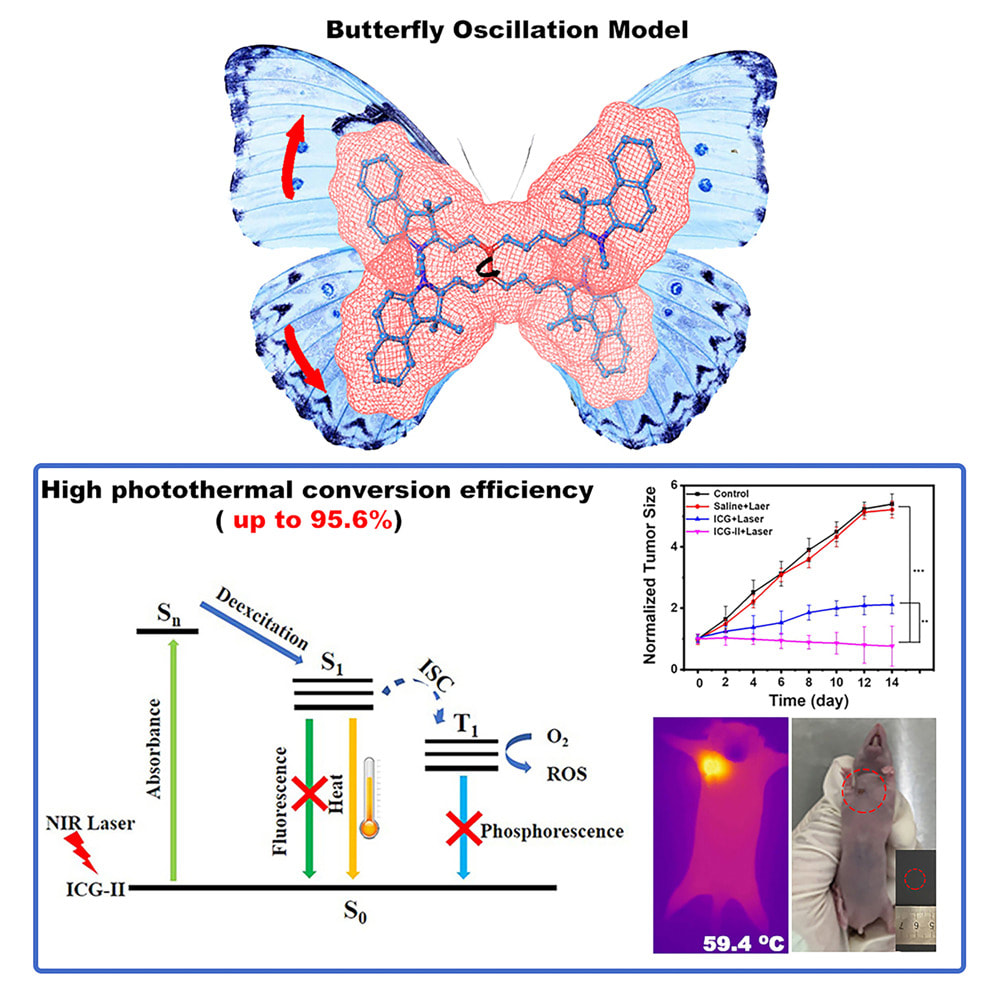|
I'm excited to share our latest research published in Cell Reports Physical Science on a game-changing advancement in photothermal therapy for cancer treatment. Our team discovered that the dimer of indocyanine green (ICG), ICG-II, can completely eliminate tumors in just 2 minutes, compared to regular ICG which doesn't work even after 5 minutes.
The key breakthrough centers around what we call "butterfly oscillation." ICG-II is essentially two ICG molecules linked together, and this pairing creates a constrained molecular motion that dramatically improves how efficiently light energy converts to heat. While regular ICG only converts 47% of laser energy to heat, ICG-II achieves an incredible 95.6% conversion efficiency - the highest ever reported for a small-molecule photothermal agent. Here's what makes this so exciting: the molecular structure of ICG-II forces it to undergo a "butterfly" vibration where parts of the molecule flap toward and away from each other. This motion facilitates non-radiative energy release as heat rather than fluorescence, making it vastly more effective at destroying cancer cells through targeted heating. In our mouse studies, direct injection of ICG-II followed by just 2 minutes of near-infrared light completely eliminated xenograft tumors in some cases, with tumor temperatures reaching over 60°C. The treatment was so effective that two mice experienced complete remission. Meanwhile, equivalent doses of regular ICG couldn't achieve tumor clearance even with longer treatment times. What's particularly promising is that ICG-II maintains excellent biocompatibility and is actually a known, FDA-permitted compound that forms naturally as an impurity during ICG production. This could significantly accelerate the path toward clinical applications, potentially offering cancer patients a faster, more effective photothermal treatment option.
0 Comments
|
Author
Chris Archives
June 2025
Categories |

 RSS Feed
RSS Feed
